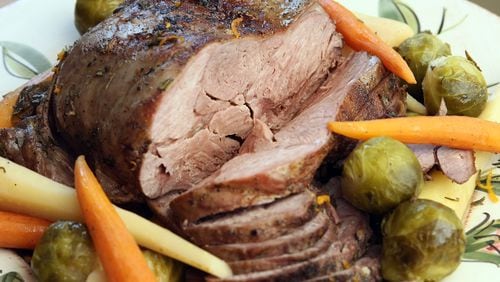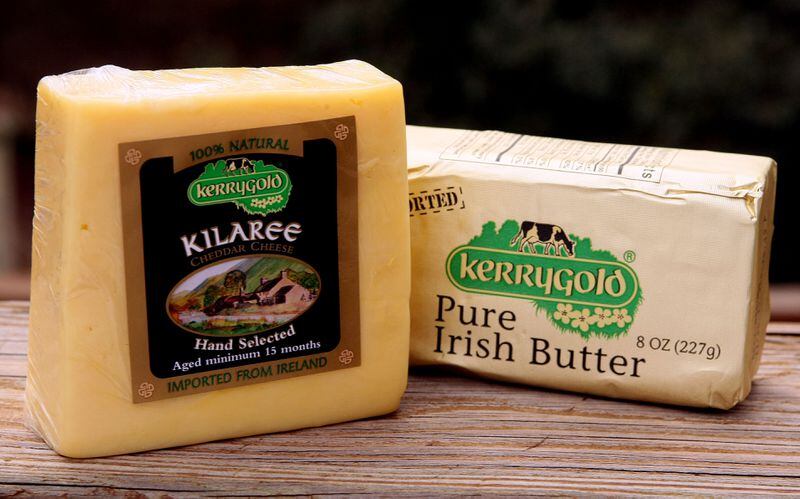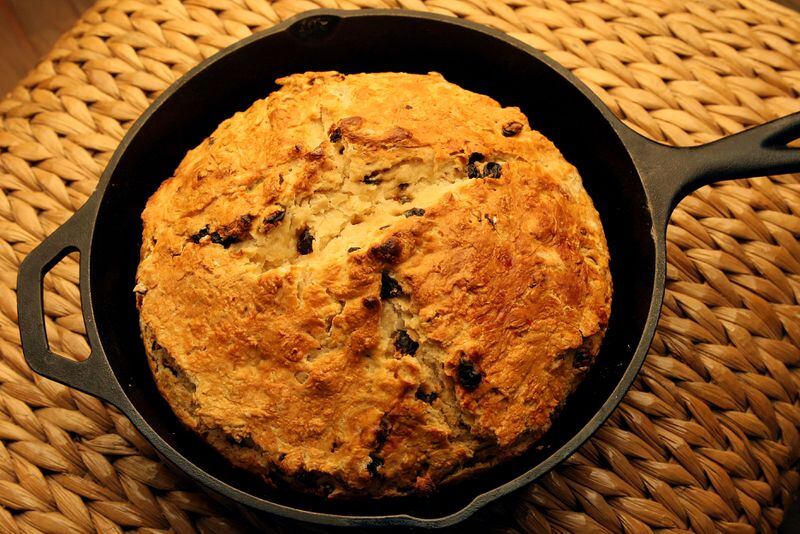Ireland. The name rolls off the tongue like a limerick and conjures images of rolling green hills, stone fences and ancient castles dotting the pastoral countryside — as well as unmatched literature and, of course, whiskey.
But the Emerald Isle has rarely stirred the world when it comes to its cuisine. Most of us simply think of potatoes when we think of Irish food, and rightly so.
The potato was most likely introduced to Ireland in the late 1500s; poor farmers found that the tuber thrived well in the nation’s cool climate and moist soil. So well, in fact, that the Irish became almost entirely dependent on the starchy vegetable — a politically induced monoculturism that eventually caused, coupled with late blight, the Irish Potato Famine that lasted from 1845 until 1852 and wiped out nearly 25 percent of the small country’s population.
With that kind of history, it would seem the Irish would hate the potato, but in fact, they still love it. It’s just that ever since a resurgence of local foods and traditional farming practices that began in the 1980s — particularly dairy farming — the Irish have returned to their native foods and, in doing so, spawned a culinary revolution of the green kind.
Credit: Phil Skinner
Credit: Phil Skinner
Today’s Ireland embraces what the sea and land give it, willingly: Irish smoked salmon, organically farmed off Ireland’s western coast, is considered a delicacy. Dairy products — especially butter and cheese — are rites of passage from the Irish culinary landscape, where cows feed freely on famous Irish grass.
The flavor shows up in the milk, cheese and butter. Kerrygold, a brand and international trademark of the Irish Dairy Board, is available at Whole Foods, Star Provisions and Publix. It offers farmers cooperatives that allow them to export their products on a larger scale.
The most famous of Kerrygold’s cheeses is Dubliner, a hard cheese similar to cheddar but with a sweeter, nuttier flavor like that of Swiss cheese. Cashel blue, a raw cow’s milk cheese of star-crossed brie and blue, is available at Star Provisions, as is Coolea, a summer milk Gouda-style cheese from Coolea in County Cork.
Fresh fish and mussels are staples as well, but nothing reigns on the Irish table as boldly as lamb. Coupled with favorites of parsnips and potatoes, roasted leg of lamb is a springtime ritual just right for the St. Patrick’s Day table.
The Irish table need no longer be thought of, as James Joyce wrote of his Mr. Duffy in “Dubliners,” an “outcast from life’s feast.” Nowadays, Irish food is the feast.
--------------------------------------
Recipes
Irish food remains simple, embracing tradition even as the nation’s cooks and chefs adopt more modern techniques. Few seasonings — save for a handful of herbs, salt and pepper — lace the cuisine, yet it embodies a refreshing new take on fresh, seasonal and local.
--------------------------------------
Traditional Irish Soda Bread
Hands on: 20 minutes Total time: 1 hour Serves: 10
Credit: Phil Skinner
Credit: Phil Skinner
This dense bread, leavened only with baking soda, is on almost every Irish table no matter the meal or time of day. Serve it warm, spread with Irish butter for your St. Patty’s Day feast.
5 to 6 cups all-purpose flour
2 tablespoons granulated sugar
1 teaspoon salt
1 teaspoon baking soda
4 tablespoons cold unsalted butter
1 cup baking raisins (raisins that have been rehydrated for baking, available at grocery stores in the dried fruit section)
1 large egg, lightly beaten
2 cups buttermilk
Egg wash made of two eggs, a sprinkle of salt and ¼ cup whole milk (optional)
Preheat the oven to 425 degrees. Sift together 5 cups of flour, sugar, salt and baking soda into a large mixing bowl. Using a pastry cutter, cut the butter into the flour mixture until it resembles coarse meal. Stir in the raisins.
Make a well in the center of the flour mixture. Pour the beaten egg and buttermilk into the well and mix in with a wooden spoon. Add more flour if needed – the dough should be fairly stiff and easy to remove with your hands, but take care not to overwork it. Remove the dough from the bowl, and knead just until it forms a ball. Shape into a round loaf.
Transfer the dough to a large, lightly greased cast-iron skillet or baking sheet. Brush the top and sides of the dough with the egg wash, if desired. Using sharp kitchen scissors, score the top of the dough about a half-inch deep with an “X” shape.
Bake until the bread turns golden brown and a pick inserted in the center comes out clean, about 40 minutes.
Per serving: 349 calories (percent of calories from fat, 16), 9 grams protein, 64 grams carbohydrates, 2 grams fiber, 6 grams fat (3 grams saturated), 35 milligrams cholesterol, 401 milligrams sodium.
--------------------------------------
Updated Irish Colcannon
Hands on: 30 minutes Total time: 30 minutes Serves: 10 as a side dish
An Irish classic, this colcannon modernizes the traditional with the addition of garlic and kale instead of cabbage and ham, bacon or sausage. Serve it as a side dish to lamb.
5 large potatoes, scrubbed
2 tablespoons butter
6 cups chopped kale
2 chopped scallions
2 minced cloves garlic
6 ounces (1½ sticks) butter
1 1/4 cups whole milk, warmed
Salt to taste
Pepper to taste
In a large sauce pot, boil the potatoes until soft. While the potatoes are cooking, in a large skillet melt the 2 tablespoons of butter on medium high heat, then add the kale, scallions and garlic until wilted. Set aside.
Drain the potatoes and place them back in the pot. Add the 1 1/2 sticks of butter and warm milk and whip until smooth. Fold in the kale mixture. Add the salt and pepper to taste.
Place the colcannon in a casserole dish and keep warm until served. This can be made a day ahead and reheated when needed.
Per serving: 231 calories (percent of calories from fat, 65), 4 grams protein, 17 grams carbohydrates, 2 grams fiber, 17 grams fat (11 grams saturated), 48 milligrams cholesterol, 200 milligrams sodium.
--------------------------------------
Roasted Boneless Leg of Lamb
Hands on: 15 minutes Total time: 65 minutes, plus at least 30 minutes to marinate (or overnight) Serves: 8
Lamb is a spring ritual in Ireland – this easy roast is adapted from Elise Bauer’s simplyrecipes.com, where she rightly cautions: “The most important thing to remember about cooking a lamb roast is to not over-cook it.”
1/2 cup orange juice
1 tablespoon orange zest
1 cup dry white wine
3 minced cloves garlic
2 teaspoons fresh thyme
2 tablespoons fresh, chopped rosemary
Salt and pepper to taste
2 tablespoons olive oil
1 (6-pound) boneless leg of lamb
12 peeled and trimmed baby carrots
6 peeled, trimmed and chopped parsnips
12 trimmed brussels sprouts
Blend well the orange juice, zest, wine, garlic, thyme, rosemary, salt and pepper and olive oil together. Set aside.
Place the lamb and marinade into a plastic bag. Squeeze out as much of the air as possible from the bag and seal. Wrap again with another plastic bag to ensure that the marinating lamb doesn’t leak. Marinate for several hours, or overnight, in the refrigerator. Remove the lamb, still in its marinade bag, from the refrigerator at least 30 minutes before putting in the oven to help bring the lamb closer to room temperature before roasting.
Preheat the oven to 425 degrees.
Remove the lamb roast from its marinade bag and generously salt and pepper all sides of the roast. Arrange the roast in the pan fattiest side up, and place the carrots, parsnips and brussels sprouts around the roast. Pour the marinade over the roast and vegetables and roast for 20 minutes. Then reduce the heat to 300 degrees and roast another 30 minutes (about 10 minutes per pound). Check the roast with a meat thermometer for doneness: 135 degrees for medium rare — perfect for lamb.
Per serving: 613 calories (percent of calories from fat, 52), 35 grams protein, 36 grams carbohydrates, 9 grams fiber, 35 grams fat (14 grams saturated), 124 milligrams cholesterol, 130 milligrams sodium.
--------------------------------------
Smoked Salmon on Pumpernickel Toasts with Crème Fraîche and Dill
Hands on: 10 minutes Total time: 10 minutes Serves: 12
Smoked Irish salmon is considered a delicate delight in Ireland; serve these toasts for an easy, appealing, all-Irish appetizer.
12 pumpernickel toast slices, packaged or cut from a loaf and toasted
12 tablespoons (6 ounces) crème fraîche
1 package smoked Irish salmon, available at most area grocery stores
12 sprigs fresh dill
Spread each toast slice with a dollop of crème fraîche. Cut the salmon into 12 equal slices lengthwise and roll each slice into a rose shape, then place on top of the crème fraîche. Garnish each toast with a tiny sprig of dill.
Per serving: 66 calories (percent of calories from fat, 63), 2 grams protein, 4 grams carbohydrates, trace fiber, 5 grams fat (3 grams saturated), 15 milligrams cholesterol, 11 milligrams sodium.








